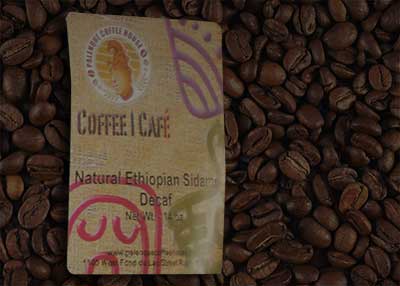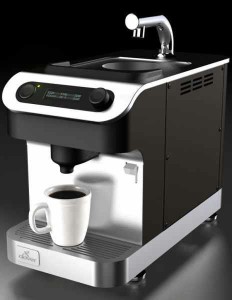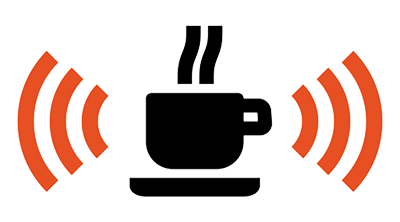Posted on May 21, 2012

The long, oddly-shaped island of Sulawesi features a number of peninsulas that jut out into the sea – it’s no wonder that the island is also host to a number of coffee origins that can be listed here. The variety of coffee from Sulawesi is some of the best that you’ll find in Indonesia; in fact, with so many islands in Indonesia, it’s hard to believe that so many of the varieties can come from just one of the islands. However, because Sulawesi is a stand-alone island, many people will simply lump coffees from this island together when referring to a single origin. There’s no right or wrong answer as to how to categorize it, but we believe it’s worth exploring the individual cultivations of Sulawesi coffee. Tana Toraja: Also known as just Toraja or Sulawesi Toraja, this is a coffee grown in the high southeastern portions of Sulawesi. Considered to be more “earthy” than Java coffee, this is a generally assertive coffee that actually has very little acidity compared to its acidflavors. Bean description: Less body than many Sumatra coffees but more assertive in other ways, such as the richness of its earthy flavors and the boldness of its acid content, which is actually surprisingly low considering the flavor. Kalosi: Also spelled “Kalossi,” this specific area of Sulawesi coffee comes from south of the Toraja region. Kalosi is actually the capital of the Enkerang region, but the specialty coffee in the region is known as Kalosi because of the strength of the coffee that is produced there. Bean description: Much of the earthiness of the Tana Toraja bean is present here, but it’s not hard to see why so many specialty coffee drinkers enjoy Kalosi for its assertiveness in other areas. It has a distinct flavor and good body content that makes it a smooth, enjoyable...
Read More »
Posted on May 17, 2012

The large island of Indonesia lying in the Indian Ocean to the west of the rest of the archipelago, Sumatra is a major source of single origin coffees for those who enjoy coffee from the region. It could be argued that Sumatra’s close proximity to southeast Asia (Thailand, Vietnam, etc.) actually make it an Asian locality. However, Sumatra’s flavors and coffees carry a distinctive Indonesian flavor that is often hard to miss. Mandheling: Also commonly known as Sumatra Mandheling coffee, this coffee is named for the Mandailing people in the north of Sumatra. Typically Mandheling is a dry processed coffee, it is wet hulled (meaning that only the outer hull of the coffee is wet-washed for removal and the rest is dry processed), which makes the coffee variety that much more unique. Typically, this type of coffee is grown within about a half a mile to a mile above sea level and roasted to a medium to dark or dark roast in order to fully realize its flavors, which are considerable. Bean description: Rich and complex with flavors that hint of everything from chocolate to licorice, this is a great source of Indonesian coffee flavor. Typically a darker roast suits this coffee bean well, such as a French roast. Lintong: Also named for influence in northern Sumatra – though this time, it is not named for a people but for a district – Lintong is produced near Lake Toba. It’s important to note that Lintong does not refer to any one single origin other than various coffees around the Lake Toba region, which means there can be a high degree of variability in the type of Lintong coffee you acquire. Bean description: Considered a low-acid, medium-bodied coffee, Lintong has a classic “earthy” coffee aroma that many people enjoy. The beans can vary in processing methods since “Lintong” is a regional market name and not necessarily referring to any specific type of cultivation style. Highly regarded by coffee...
Read More »
Posted on May 14, 2012

Because you saw so many references to wet hulling in the descriptions of coffee growing regions in Indonesia in the previous section, it’s worth taking some time here in order to fully explore what the process means. The wet hulling process refers to the mechanical removal of the coffee’s outer “hull,” also known as the parchment and silverskin of the coffee berry. Because it is a “wet” coffee process, this means that the mechanical processing takes place after the coffee berries have already been washed in water in order to soften the outer layers and make them easier to remove. In the dry processing of coffee, all of these elements of the coffee berry are removed at the same time. Wet processing typically is inexpensive compared to dry processing because dry processing requires manual labor whereas wet processing can largely be handled by a number of machines. Not all of the wet processing of coffee is technically “wet,” however, as wet processing typically includes a drying phase after the outer pulp of the coffee bean has been removed. The drying is used after fermentation to remove the coffee berry’s mucilage, getting the moisture content of the coffee bean back to where it should be for ideal storage and usage. As a single origin coffee lover, it helps to know how coffee is typically processed in the area of your choice because the processing of coffee will leave a distinctive taste on the coffee flavor that ends up in your cup. For dry processing methods, much of the coffee bean’s natural flavors are left intact: acidity, body, and all. For people who love a purer taste of coffee – particularly if trying to pick up on a region’s own distinctive notes – dry processing is typically the preferred method. Wet processing methods will typically result in a clean-tasting and low-acid cup of coffee; the sacrifice is that the coffee also loses much of its body in the washing and drying processes. This is not necessarily “better” or “worse” than dry processed coffee; it all depends on your own individual tastes. People who prefer a low-acid coffee will often enjoy wet hulled or wet processed coffee; for this reason people with low tolerance for acidity will often enjoy a cup of coffee that saw its origins in...
Read More »
Posted on May 10, 2012

Since Indonesia is not just one land but a series of islands of highly-varying sizes, understanding coffee production in Indonesia is as complex as the geography of itself. That said, it’s worth exploring some of the largest and most popular coffee-producing areas in Indonesia so that you can understand the differences between the single origin coffee produced in each area. Sumatra: The largest coffee producer in Indonesia (and the largest island wholly under Indonesian control, as Borneo and New Guinea are shared with other countries), Sumatra coffee is typically produced at the farm level using the wet processing method. A number of Arabica coffees come from the high-lying areas in Sumatra, such as the high plateau of the District of Lintongnihuta. Sulawesi: The world’s eleventh-largest island is a long, curving island between Borneo and the Maluku islands. It has a number of jutting, thin peninsulas that poke into the sea, giving it a lot of low-lying farm area. Additionally, Sulawesi is a geologically old island – dating back some 100 million years – which gives its soil a particularly rich high-iron quality. The high-altitude area of Tana Toraja is known for its Arabica, but Sulawesi coffee in general is known for its Giling Basah processing method, or wet hulling. More about wet hulling in a little bit. Java: Even people who aren’t “into” coffee probably know the name of Java, and with good reason: Java is one of the primary components of “Mocca Java,” which pairs Indonesian coffee with Yemeni coffee if you recall the section on Mocha earlier on in this guide. Additionally, Kopi Luwak, a coffee we’ll explore in further detail as well, comes from this section of the Indonesian archipelago. Bali: A very small section of the Indonesian landscape, Bali is a favorite of those single origin coffee seekers who want to ensure that they receive Fair Trade coffee, which is coffee trading that places an emphasis on the overall equity of distribution, meaning that the “little guy” who does much of the labor in coffee production is not left out of the price loop. Papua: As New Guinea is the second largest island in the world (second only to Australia, which is so large that it is also a continent), Indonesia’s section of New Guinea – called Papua – is a significant piece of the Indonesian landscape. It is divided up into two provinces: Paupa and West Papua. Coffee here is also wet hulled, and this area of Indonesia is believed to be on the rise thanks to the large amount of area that is well-suited for shade-grown coffees. Additionally, because pesticide is not used in this area of Indonesia, people who want organic coffees are interested in looking at Papua-grown coffees. Sumbawa: An island in and of itself, much of the coffee from Sumbawa is actually marketed as “Tambora” because of Mount Tambora and...
Read More »
Posted on May 7, 2012

To first understand how Indonesian coffee works, it’s important to first understand the country of Indonesia – a country so vast and diverse that it is the only single-origin section devoted entirely to just one country. First, geography: Indonesia spans a multitude of islands from southeast Asia east through the Pacific north of Australia. It is an archipelago country; looking at a map, it’s hard to tell that it’s even a country at all unless it’s clearly labeled. Many countries are comprised of many islands; Great Britain, for example, holds territory in Britain and on Ireland as well as across the Caribbean. But Indonesia is many islands, with a few main islands. As for the types of coffee grown in Indonesia: as stated, most of the coffee produced here is Robusta, in contrast to many of the countries of the western hemisphere. Much of this Robusta is not highly regarded as a source of single origin coffee; much of it is used to make blends. In fact, much of Indonesian Robusta could be seen as the enemy of the single origin coffee drinker, since much of these coffee beans are combined with beans from other countries to make blends often sold in supermarkets. However, many of the Arabica varieties found here are held in high regard by single origin coffee lovers worldwide, including coffees grown in Sumatra – though we’ll get into greater detail about these specific types of coffee later. In addition, the island of Java is in Indonesia, and if you know your coffee, you know that Java is a very famous name indeed. Another thing to consider about Indonesia is that while it is a large coffee producer on a global stage, most (in fact, as much as 90%) of the coffee produced here is actually produced by small farmers, and not large organizations. This contributes a lot to the quality found in Indonesian coffee, especially considering that there are a number of farmer cooperatives made up of exporters who are certified as organic. Much of the coffee produced here is also low in acidity, which makes it ideal for producing good blends along with higher acidity beans found in both Central America and East Africa, two areas we’ve explored already. Robusta bean blends using both Indonesian and Central American/East African coffees can still be of a very high quality with a pleasing result in terms of acidity and...
Read More »






